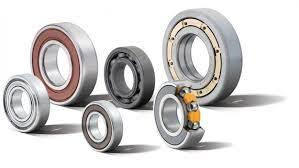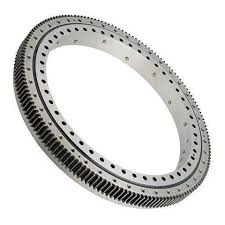Bearings are essential components in machinery, designed to reduce friction between moving parts, thereby increasing efficiency and extending equipment life. By facilitating smoother motion, bearings minimize energy loss and wear, which is essential for optimal performance of a variety of mechanical systems.
Friction occurs when two surfaces move against each other, impeding motion and often leading to increased wear and energy consumption. In rotating machinery, this friction is typically found between a rotating shaft and its supporting components. If not properly managed, excessive friction can lead to higher operating temperatures, increased maintenance requirements, and reduced overall efficiency.

Bearings function by replacing sliding friction with rolling friction, which is significantly lower. For example, in a ball bearing, polished steel balls roll between inner and outer raceways, minimizing direct surface contact and, therefore, reducing friction. Proper lubrication further reduces friction by forming a film between the rolling elements and raceways, preventing metal-to-metal contact and dissipating heat.
Sliding Bearings:
This involves two surfaces sliding against each other and is usually lubricated to reduce friction.
Plain bearingsare simple in design and are often used in applications that require high load capacity, but they may wear more due to the greater surface contact.
Roller bearings: This category includesrodamientos de bolasyrodamientos de rodillos, which use rolling elements to keep moving parts separated, thereby reducing friction and carrying radial and axial loads.
Fluid bearings: These bearings use a thin layer of fluid, such as oil or air, to keep surfaces apart to minimize friction. Often used in applications such as computer hard drives, fluid bearings operate quietly and have very low friction.
Magnetic bearings: Magnetic bearings use a magnetic field to levitate components, eliminating physical contact and friction. They are used in high-speed applications such as turbines and generators, and since there is no wear, they are maintenance-free.

Factors that affect bearing performance
Several factors affect how well a bearing reduces friction:
Material selection: Advanced materials, such as polymers like PTFE and nylon, are corrosion-resistant and lightweight, which can help reduce friction.
Geometry design:
Optimizing the bearing geometry, including special cage designs and the number of rolling elements, can affect friction levels.
For example, 3D printed retainers made of lightweight materials can reduce the overall weight and friction of the bearing.
Lubrication: Proper lubrication is essential to reduce friction and prevent wear. Innovative technologies such as graphene coatings are being explored to achieve ultra-low friction and long-lasting lubrication.
Installing the right type of bearing in machinery is essential to reduce friction, improve energy efficiency and extend the life of equipment. As an internationally traded bearing supplier, we offer a range of standard androdamientos personalizadosto meet different industry needs. By focusing on high-quality materials, innovative design and proper lubrication,AINEcan provide solutions to optimize mechanical performance for customers around the world.
Copyright © Rodamientos NSAR. Reservados todos los derechos.